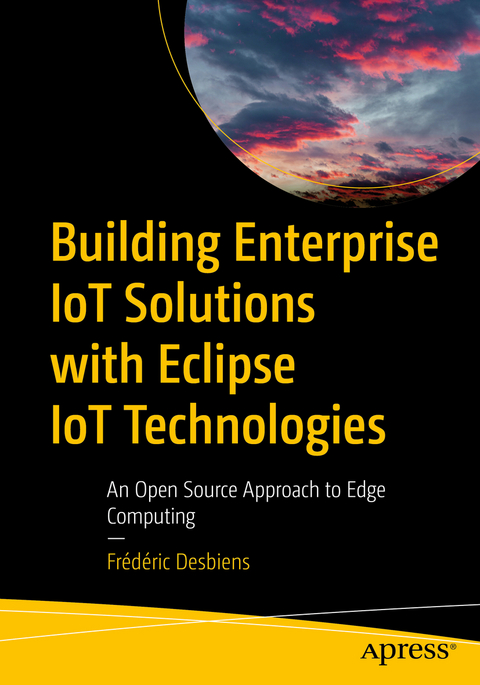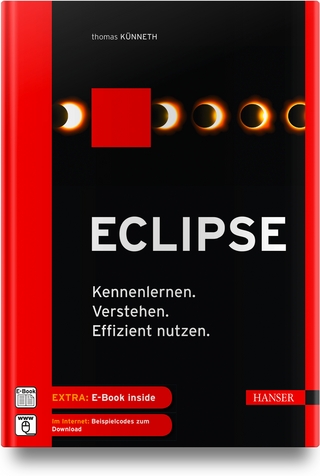
Building Enterprise IoT Solutions with Eclipse IoT Technologies
Apress (Verlag)
978-1-4842-8881-8 (ISBN)
Although the book discusses hardware matters, its focus is on software and relevant open standards. The book helps you understand the pros and cons of the technologies available from Eclipse IoT and how they have been used in actual deployments. The examples provided cover a variety of use cases, such as industrial automation, smart agriculture, digital buildings, robotics, and others.
The book's contents follow a reference architecture encompassing constrained devices (things), edge devices (gateways, servers), and IoT Cloud platforms. For each of those three pillars, you will learn about relevant open-source components. Usage of code libraries and frameworks is explained through code samples. You will also learn how to deploy and configure platform-type components and how to leverage them. Special attention will be paid to security and edge computing throughout the book.
What You Will Learn
Describe in your own words the main software components required in an IoT architecture
Select the appropriate IoT protocols, components, frameworks, and platforms for a specific project
Evaluate the connectivity options at your disposal and select the most appropriate ones
Explain the value of business models focused on open-source components and deploy such models in your organization
Determine if edge computing is relevant to a project and deploy the relevant components on an edge computing platform
Build Enterprise IoT solutions leveraging an array of open-source components and platforms using popular languages such as C, Java, and Rust
Who This Book Is For
Developers new to enterprise IoT who want to learn about fundamental technologies for that market segment and seek an introduction to relevant, open-source building blocks; experienced IoT developers who seek alternatives to the proprietary platforms they are currently using; software architects designing IoT solutions who want to understand open-source technology options
Frédéric Desbiens manages IoT and Edge Computing programs at the Eclipse Foundation. His job is to help the community innovate by bringing together devices and software. He is a strong supporter of open source. In the past, he worked as a product manager, solutions architect, and developer for companies as diverse as Pivotal, Cisco, and Oracle. He has an MBA in electronic commerce, a BASc in Computer Science and a BEd, all from Université Laval. After work hours, Frédéric likes to read a history book, play video games, or watch anime.
Part I. Fundamentals and Protocols.- 1. What is IoT?.- 2. CoAP.- 3. LwM2M.- 4. MQTT.- 5. Sparkplug.- 6. DDS.- 7. zenoh.- Part II. Constrained Devices.- 8. The Hardware.- 9. Connectivity.- 10. Operating Systems.- Part III. Edge Computing and IoT Platforms.- 11. Edge Computing.- 12. Applications.- 13. Integration and Data.- 14. Conclusion.
| Erscheinungsdatum | 17.12.2022 |
|---|---|
| Zusatzinfo | 51 Illustrations, black and white; XXVIII, 364 p. 51 illus. |
| Verlagsort | Berkley |
| Sprache | englisch |
| Maße | 178 x 254 mm |
| Themenwelt | Mathematik / Informatik ► Informatik ► Netzwerke |
| Informatik ► Programmiersprachen / -werkzeuge ► Eclipse | |
| Technik ► Elektrotechnik / Energietechnik | |
| Schlagworte | COAP • contactless payments • Digital Twins • Eclipse • Eclipse Californium • Eclipse Cyclone DDS • Eclipse Keyple • Eclipse Leshan • Eclipse Paho • Eclipse Sparkplug • Eclipse Zenoh • edge computing • Energy Management • Internet of Things (IoT0 • IoT and Edge Computing for Architects • IoT and Edge Gateways • LwM2M • MQTT • VOLTTRON |
| ISBN-10 | 1-4842-8881-5 / 1484288815 |
| ISBN-13 | 978-1-4842-8881-8 / 9781484288818 |
| Zustand | Neuware |
| Informationen gemäß Produktsicherheitsverordnung (GPSR) | |
| Haben Sie eine Frage zum Produkt? |
aus dem Bereich

